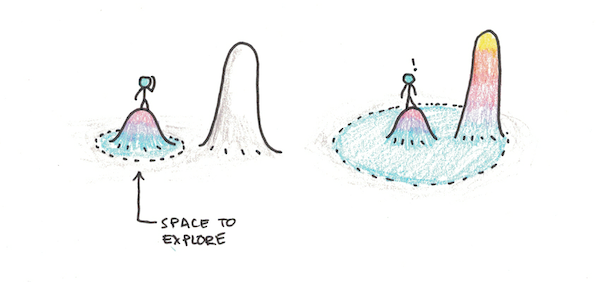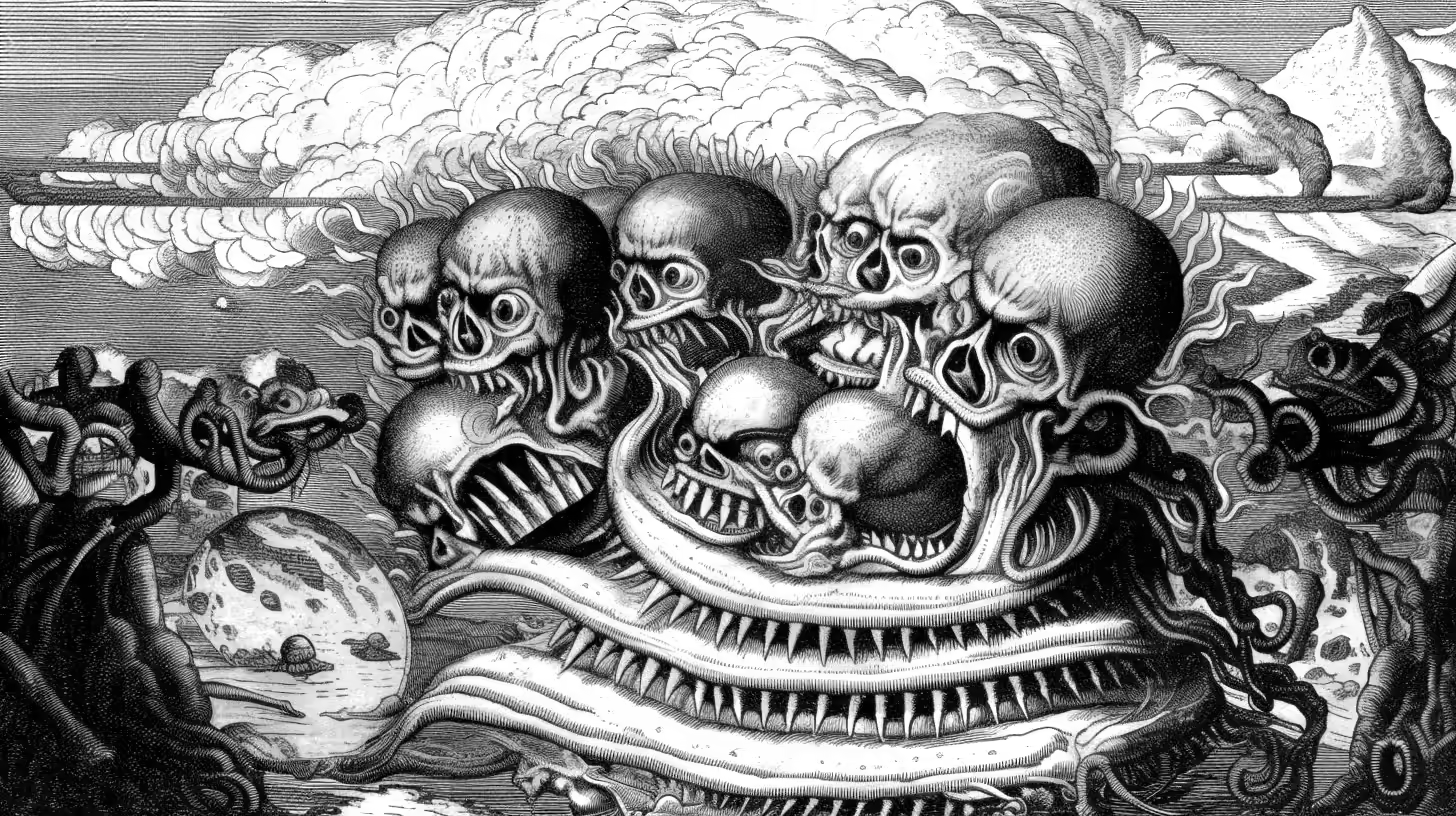Moloch, slack and friends
Weak selection versus goodharting, 内卷, involution, ascendance, resilience, enshittification, Malthusian equilibria
2021-12-25 — 2025-11-08
Wherein the inevitability of competitive selection is considered, the tension between ascendancy and reserve capacity is delineated, and platform enshittification is exemplified by TikTok’s progressive capture of value.
I’d like to connect this idea to metis and ecological ideas of creative destruction.
cf. Ulanowicz’s Ascendancy and Reserve Capacity
1 Slack
For now, consider the work of someone else: Immoral mazes is an essay series by Zvi Mowshowitz about a bunch of topics dear to me in one place, and I’m looking forward to reading it. There’s a summary.
A long time ago, Scott Alexander wrote Meditations on Moloch. Moloch represents the inevitability of competitive selection pressure, given a long enough time horizon, completely binding all behaviour, and thus destroying all value, then all life.
This hasn’t fully happened yet. But it will. Unless we use this one opportunity offered to us by our technological progress before that happens, and stop it.
A less long time ago, I introduced the (pre-existing) concept of Slack. Slack is the absence of binding constraints on behaviour. Metaphorically, slack is life. Literally, slack is also life. Without slack, life is unable to both survive and retain the ability to adapt, and thus loses one, then the other, and dies.
Recently, Scott wrote Studies on Slack, which made a lot of this more explicit and easier to understand, especially the point that slack is life.
A lot of the discourse around Moloch is, of course, a rebranding of the classic economics problem of public goods.
Key terms include multipolar traps. I’ll come back to that if I have time. This is notably pertinent to bureaucracy.
2 Ascendancy etc
Baez discusses something like the concept of slack in the context of biodiversity while reviewing Ulanowicz et al. (2009):
I’m not sure the math lives up to their claims, but I am curious about these lines:
In other words, (14) says that the capacity for a system to undergo evolutionary change or self-organization consists of two aspects: It must be capable of exercising sufficient directed power (ascendancy) to maintain its integrity over time. Simultaneously, it must possess a reserve of flexible actions that can be used to meet the exigencies of novel disturbances. According to (14) these two aspects are literally complementary.
The two aspects are ‘ascendancy’, which is something like efficiency or being optimized, and ‘reserve capacity’, which is something like random junk that might come in handy if something unexpected comes up.
You know those gadgets you kept in the back of your kitchen drawer and never needed… until you did? If you’re aiming for ‘ascendancy’ you’d clear out those drawers. But if you keep that stuff, you’ve got more ‘reserve capacity’. They both have their good points. Ideally, you want to strike a wise balance. You’ve probably sensed this every time you clean out your house: should I keep this thing because I might need it, or should I get rid of it?
While the dynamics of this dialectic interaction can be quite subtle and highly complex, one thing is boldly clear—systems with either vanishingly small ascendancy or insignificant reserves are destined to perish before long. A system lacking ascendancy has neither the extent of activity nor the internal organization needed to survive. By contrast, systems that are so tightly constrained and honed to a particular environment appear “brittle” in the sense of Holling (1986) or “senescent” in the sense of Salthe (1993) and are prone to collapse in the face of even minor novel disturbances. Systems that endure—that is, are sustainable—lie somewhere between these extremes. But, where?
3 Enshittification/adshittification
A particular flavour of Molochian endpoint for social and mass media, whose business models seem vulnerable to the same end-game.
The ‘Enshittification’ of TikTok:
Here is how platforms die: first, they are good to their users; then they abuse their users to make things better for their business customers; finally, they abuse those business customers to claw back all the value for themselves. Then, they die. I call this enshittification, and it is a seemingly inevitable consequence arising from the combination of the ease of changing how a platform allocates value, combined with the nature of a “two sided market”, where a platform sits between buyers and sellers, holding each hostage to the other, raking off an ever-larger share of the value that passes between them.
- The 2023 Word of the Year is “enshittification”, according to the American Dialect Society
4 内卷/Nèi juǎn
An alternative term, according to Steve Hou:
One of the most popular sociological internet catchphrases in China doesn’t have a good translation. “内卷” or technically “involution”, which nobody understands. But it describes a perverse state of affairs where competition gets perniciously fierce while rewards get ever smaller.
Cf. Temu — Moloch as a Service. See 拼多多Temu出海记:一场席卷全球的价格战|卖家|电商|亚马逊_网易订阅.
5 Incoming
Winning is for losers might fit?
Martin Sustrik analyses Moloch using evolutionary theory and considers other related models, such as slack as random mutation and Moloch as deterministic evolution.
Nintil - Slaying Alexander’s Moloch.
Thought: We might want to connect Moloch to optimizing for random versus adversarial losses too. Adversarial games favour ‘pessimistic’, minimax-like strategies that might be better at surviving disasters. Evolution is wise to both of these ideas.
Moloch evokes Goodhart’s law, no?
Game B is a political movement which puts Moloch directly in the crosshairs. See the Game B Wiki.
Moloch is Our God: AI, Mankind, and Moloch Walk Into A Bar — Only Two May Leave | Conrad Bastable
This essay contains some (tongue-in-cheek) advice for a Superhuman Artificial General Intelligence who might read this in the future and be wondering how best to understand, conquer, or provide for the natives (that’s us). Hopefully this advice doesn’t make me a species-traitor.


